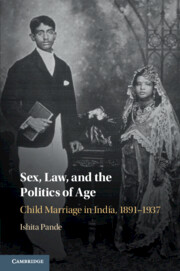Two commonly linked harmful practices that negatively impact the health of girls and women in sub-Saharan Africa, and threaten their development and quality of life, are female genital mutilation and girl-child marriage. The central focus of the study was to investigate the association between female genital mutilation and girl-child marriage in sub-Saharan Africa. Data from the most recent Demographic and Health Surveys of twelve sub-Sahara African countries were pooled. A total of 14,748 women aged 20–24 were included in the study. A multilevel logistic regression analysis was employed, with reported adjusted odds ratios (aORs) and associated 95% confidence intervals (CIs). The overall prevalence of FGM in the twelve countries was 52.19%, with the highest prevalence in Guinea (97.17%). The overall prevalence of girl-child marriage in the twelve countries was 57.96%, with the highest prevalence in Chad (78.06%). Women who had never experienced female genital mutilation were less likely to experience girl-child marriage (aOR=0.76, CI=0.71–0.82) compared with those who had ever experienced female genital mutilation. Age 24 (aOR=0.47, CI=0.43–0.52), secondary/higher level of education (aOR=0.31, CI=0.28–0.35), richest wealth quintile (aOR=0.56, CI=0.47–0.66), exposure to mass media (aOR=0.81, CI=0.74–0.88) medium community literacy level (aOR=0.63, CI=0.57–0.69) and low community socioeconomic status (aOR=0.67, CI=0.49–0.92) were found to be protective against girl-child marriage. The findings reveal that female genital mutilation is associated with girl-child marriage in sub-Saharan Africa. The continued practice will adversely affect the reproductive health outcomes of girls in the sub-region. Policies aimed at eliminating female genital mutilation and girl-child marriage should focus on compulsory basic education, poverty alleviation and increasing access to mass media. Further, campaigns should cover more communities with lower literacy levels and medium socioeconomic status.
